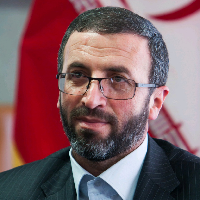Typology of Theme System in Persian and Azeri Turkish
Author(s):
Abstract:
In systemic functional typology, which studies the systems of languages rather than the whole languages, linguists strive towards empirical generalizations that in principle apply to all languages around the world. In line with the above-mentioned goal of systemic functional typology and having examined the ideational (logical and experiential), interpersonal, and textual systems of the ‘clause grammar’ of different and various languages, Matthiessen (2004) has achieved a series of typological generalizations/universals. In connection with his proposed typological generalizations, Matthiessen (2004) has argued that they can be applied in the description of any language and in the attempt to expand the typological explanations in the framework of systemic functional grammar as well. However, he has immediately stated that “It is not yet possible to propose a generalized map; but we have to move in that direction.”
In line with Matthiessen’s claim mentioned above, the present paper has attempted to describe the THEME system of Azeri Turkish on the one hand and compare it with the THEME system of Persian language on the other hand. This research has been conducted in terms of the following three typological parameters concerning the THEME system: (1) The treatment of unmarked and marked THEME (related to the subsystem of THEME MARKEDNESS), (2) The relationship between THEME and MOOD (related to the subsystem of THEME SELECTION), and (3) The relationship between experiential (topical) THEME and interpersonal and textual THEME (related to the subsystems of THEME TYPE, INTERPERSONAL THEME, and TEXTUAL THEME).
Studying typological behaviors of the Azeri Turkish THEME system in the framework of Matthiessen (2004)’s typological generalizations and comparing those behaviors with the typological behaviors of the Persian THEME system show that the two languages of Persian and Azeri Turkish (1) have an almost identical thematic structure, (2) treat both unmarked and marked Themes similarly, (3) have multiple types of Themes beside simple ones, (4) treat the elements of a multiple Theme similarly, and (5) have a MOOD-free THEME system. These findings show that both languages, which are genealogically different, have a similar THEME system and specifically the three subsystems of THEME MRKEDNESS, THEME SELECTION, and THEME TYPE. This result is consistent with ‘axial principle of congruence’. According to this principle, languages tend to be more congruent with one another in terms of paradigmatic axis/system than in terms of syntagmatic axis/structure.
In the end, it is suggested that the typological behaviors of the THEME system of other languages spoken in Iran be identified and introduced in the aforementioned framework.
In line with Matthiessen’s claim mentioned above, the present paper has attempted to describe the THEME system of Azeri Turkish on the one hand and compare it with the THEME system of Persian language on the other hand. This research has been conducted in terms of the following three typological parameters concerning the THEME system: (1) The treatment of unmarked and marked THEME (related to the subsystem of THEME MARKEDNESS), (2) The relationship between THEME and MOOD (related to the subsystem of THEME SELECTION), and (3) The relationship between experiential (topical) THEME and interpersonal and textual THEME (related to the subsystems of THEME TYPE, INTERPERSONAL THEME, and TEXTUAL THEME).
Studying typological behaviors of the Azeri Turkish THEME system in the framework of Matthiessen (2004)’s typological generalizations and comparing those behaviors with the typological behaviors of the Persian THEME system show that the two languages of Persian and Azeri Turkish (1) have an almost identical thematic structure, (2) treat both unmarked and marked Themes similarly, (3) have multiple types of Themes beside simple ones, (4) treat the elements of a multiple Theme similarly, and (5) have a MOOD-free THEME system. These findings show that both languages, which are genealogically different, have a similar THEME system and specifically the three subsystems of THEME MRKEDNESS, THEME SELECTION, and THEME TYPE. This result is consistent with ‘axial principle of congruence’. According to this principle, languages tend to be more congruent with one another in terms of paradigmatic axis/system than in terms of syntagmatic axis/structure.
In the end, it is suggested that the typological behaviors of the THEME system of other languages spoken in Iran be identified and introduced in the aforementioned framework.
Keywords:
Language:
Persian
Published:
Language Related Research, Volume:9 Issue: 6, 2019
Pages:
157 to 186
magiran.com/p1923295
دانلود و مطالعه متن این مقاله با یکی از روشهای زیر امکان پذیر است:
اشتراک شخصی
با عضویت و پرداخت آنلاین حق اشتراک یکساله به مبلغ 1,390,000ريال میتوانید 70 عنوان مطلب دانلود کنید!
اشتراک سازمانی
به کتابخانه دانشگاه یا محل کار خود پیشنهاد کنید تا اشتراک سازمانی این پایگاه را برای دسترسی نامحدود همه کاربران به متن مطالب تهیه نمایند!
توجه!
- حق عضویت دریافتی صرف حمایت از نشریات عضو و نگهداری، تکمیل و توسعه مگیران میشود.
- پرداخت حق اشتراک و دانلود مقالات اجازه بازنشر آن در سایر رسانههای چاپی و دیجیتال را به کاربر نمیدهد.
In order to view content subscription is required
Personal subscription
Subscribe magiran.com for 70 € euros via PayPal and download 70 articles during a year.
Organization subscription
Please contact us to subscribe your university or library for unlimited access!



